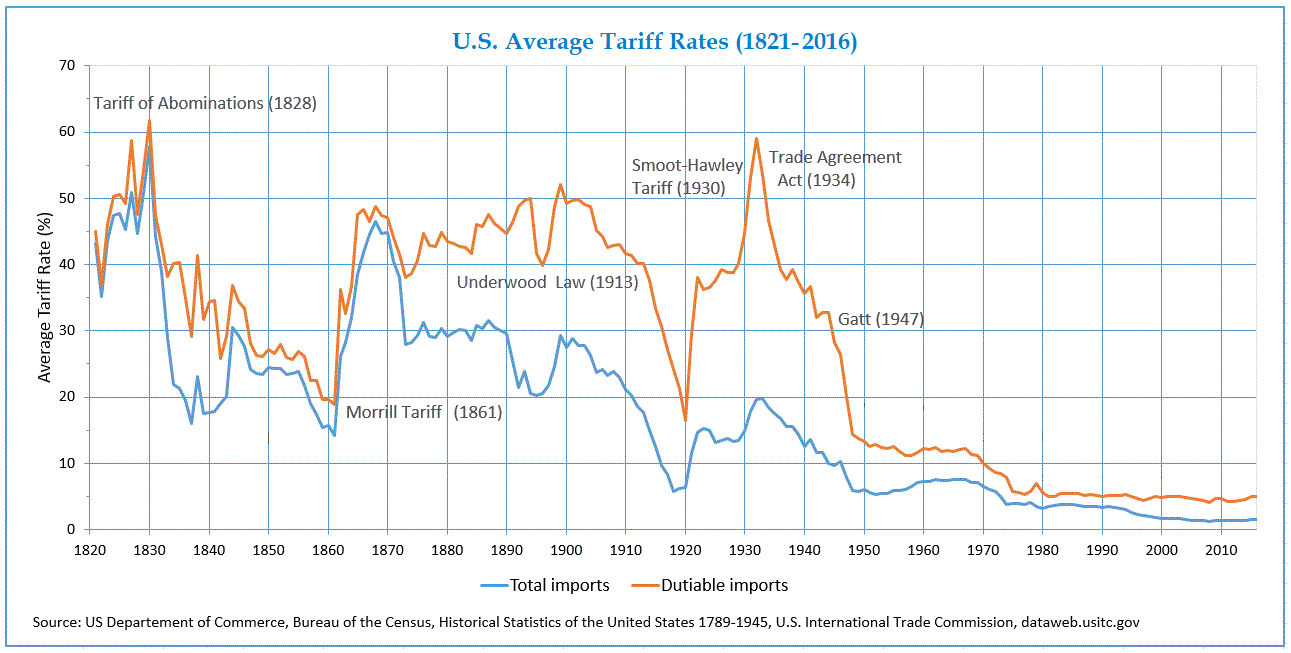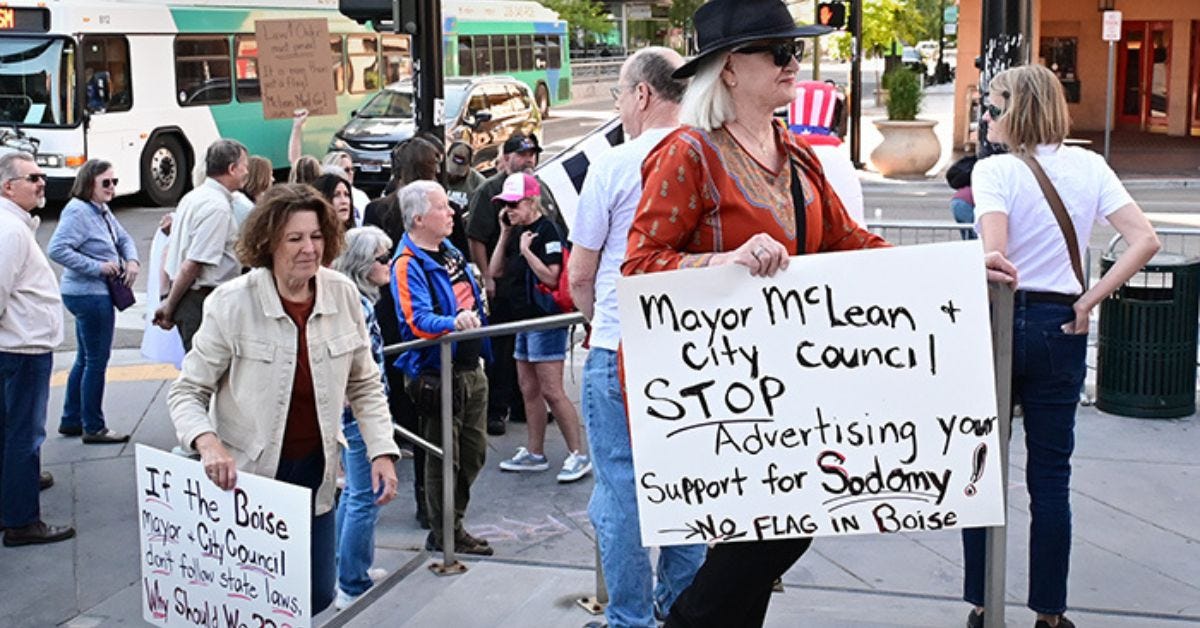On Thursday, Trump held a press conference with UK Prime Minister Keir Starmer announcing a trade agreement in the wake of Trump’s tariff policy. The details of the deal can be found here. Trump claims this is the first successful agreement of many negotiations designed to bring a more level playing field to our trade policies and address our large trade deficit.
Trump’s use of tariffs to restructure the global trade system has sparked considerable discussion and controversy. Here are three things to keep in mind about tariffs as these discussions continue and other trade events occur.
One: Tariffs Were Once the Primary Source of Federal Revenue
From 1798 until 1913, tariffs accounted for 50-90% of federal revenues. Tariffs were substantial until the end of World War II when we lowered tariffs to aid the re-building of war-ravaged countries. Prior to Trump’s tariffs, they accounted for about 2% of federal revenue.
Two: Our Tariffs are the Lowest
Even after the implementation of Trump’s tariffs, no country charges us less in tariffs than we charge them. The bulk of the countries have the same 10% rate that we now impose on them and again, these are 'reciprocal’ tariffs so any country could lower their rate to the US and the US would in turn lower the tariff charged to them.
Three: Tariffs Did Not Cause the Great Depression
As mentioned above, tariffs existed long before the Great Depression and even with the substantial jump in tariffs due to the Smoot-Hawley Act, that was not implemented until after the stock market crash of 1929. The tariffs may have exacerbated and prolonged the depression, but the financial instability existed before tariffs were boosted.
There is debate on the inflationary impact of tariffs and that is cited by Fed Chairman Powell as to why he is not lowering the prime rate, which has drawn Trump’s criticism. The Trump Administration has the unenviable task of debt refinancing. As chunks of our 36+ trillion national debt come due, we have to refinance them with interest rates that are now significantly higher than before. Like a mortgage, every point of interest adds considerable expense to the cost of the loan.
There is a debate about protectionism. When Smoot-Hawley was implemented, we had a trade surplus and tariffs were raised to over 50%. A key difference now is that we have a large trade deficit. Trump has argued that our trade deficit over several decades reflects the loss of our manufacturing base and related jobs. We saw during Covid how fragile the supply chain can be when we don’t produce vital supplies such as PPE or critical pharmaceuticals. Alexander Hamilton argued for tariffs and that certain industries need to be protected for just such reasons. For example, he pushed for the highest tariffs on munitions as he believed the fledgling US should not be dependent on foreign countries to provide the weapons needed for self-defense.
Lastly, the intent of a tariff can impact its success or failure. Historian and Hoover Institute Fellow Victor Davis Hanson argues that tariffs can succeed if they are about fair trade and lowering trade deficits but can backfire if they are about revenue generation. He cautions Trump to emphasize the former.
Flag War Update
Boise Mayor McClean led the passage of a resolution to skirt the state’s new flag law which was covered in last week’s issue. The state law in question can be found here. The resolution that was passed is below.
Salt Lake City, Utah is undergoing the same and in Bonner’s Ferry, a resolution passed to allow that city to continue flying the Canadian flag. It will likely be next legislative session before any further movement occurs on this issue and without any penalty for defying the law, it may all be moot. One further question to define will be ‘how many flags can be official’? The current statute seems to say that there can only be one whereas Boise now has three.
Excitement and Concerns for First American Born Pope
While the selection of Pope Leo XIV was rather quick (five rounds of voting over two days), it was not much different than recent selections. Pope Pius XI took five days in 1922 - the longest in more modern times.
The Trump Administration expressed eagerness to meet with the new Pope but other voices in the America First movement were more skeptical. As a cardinal, the Pope has apparently been critical of the border policies espoused by Trump. Then there is a document yet to be made public outlining the arrangement of the Catholic Church in China with the CCP (Chinese Communist Party), which reportedly gives the CCP significant influence over the church in China such as the selection of bishops.










Thanks for the great summary.
Re: Flag kerfuffle…
If it were up to us, we would narrow Idaho's flag bill considerably:
1️⃣ Business and private organizations can fly whatever flags they like.
2️⃣ Government entities, including schools:
Outdoor displays:
🚩 US Flag
🚩 Idaho State Flag (requires at least 2/3 majority voter approval to change)
🚩 ONE city flag (city flag requires at least majority - 2/3 voter approval to change)
Indoor displays:
🚩 As above plus official country flags and other official US state flags.
Possible exception:
🚩 Official and specialty flags could appear in special educational exhibit rooms.
3️⃣ Penalties: Daily fines, loss of tax revenue, civil penalties.